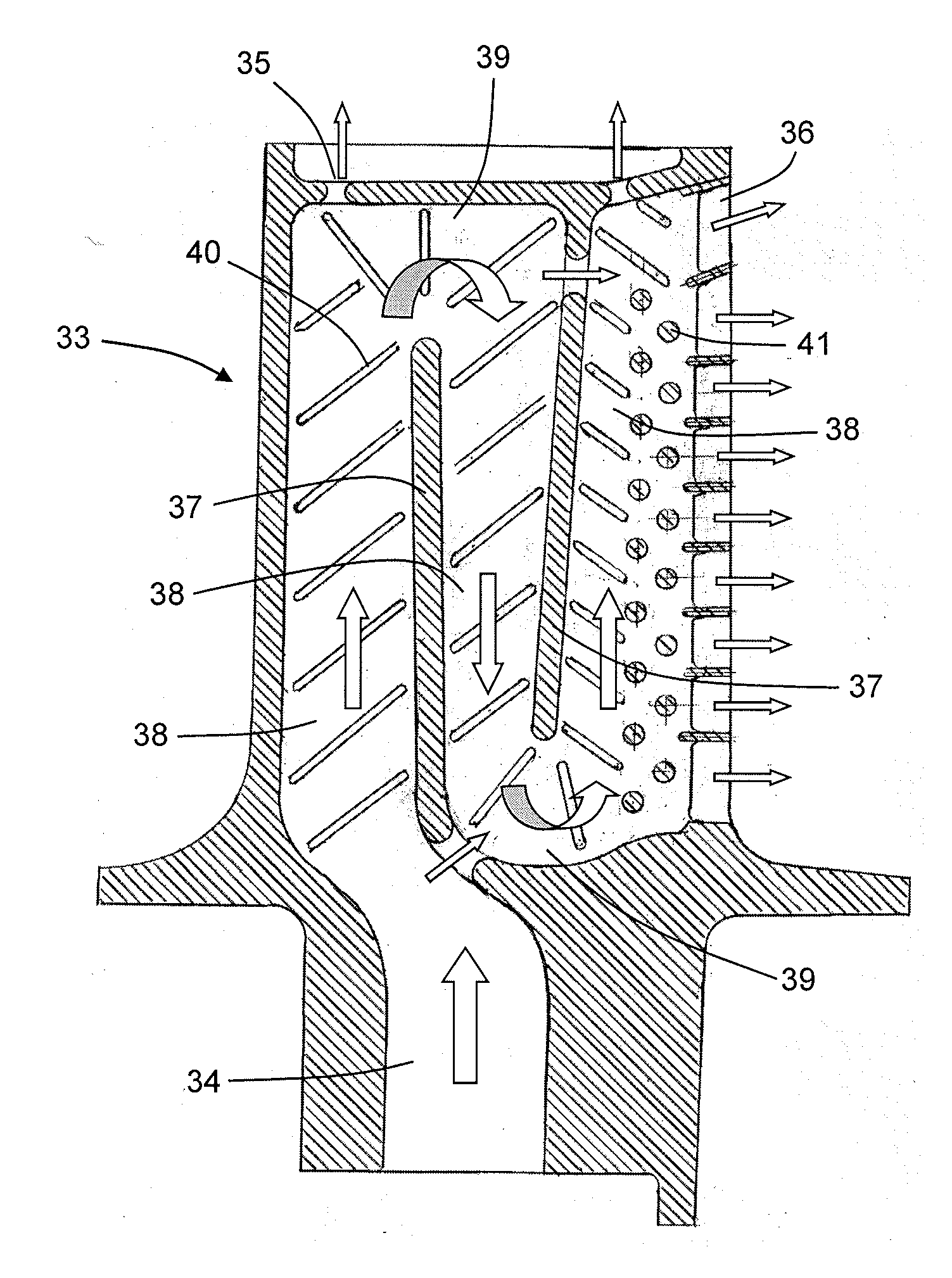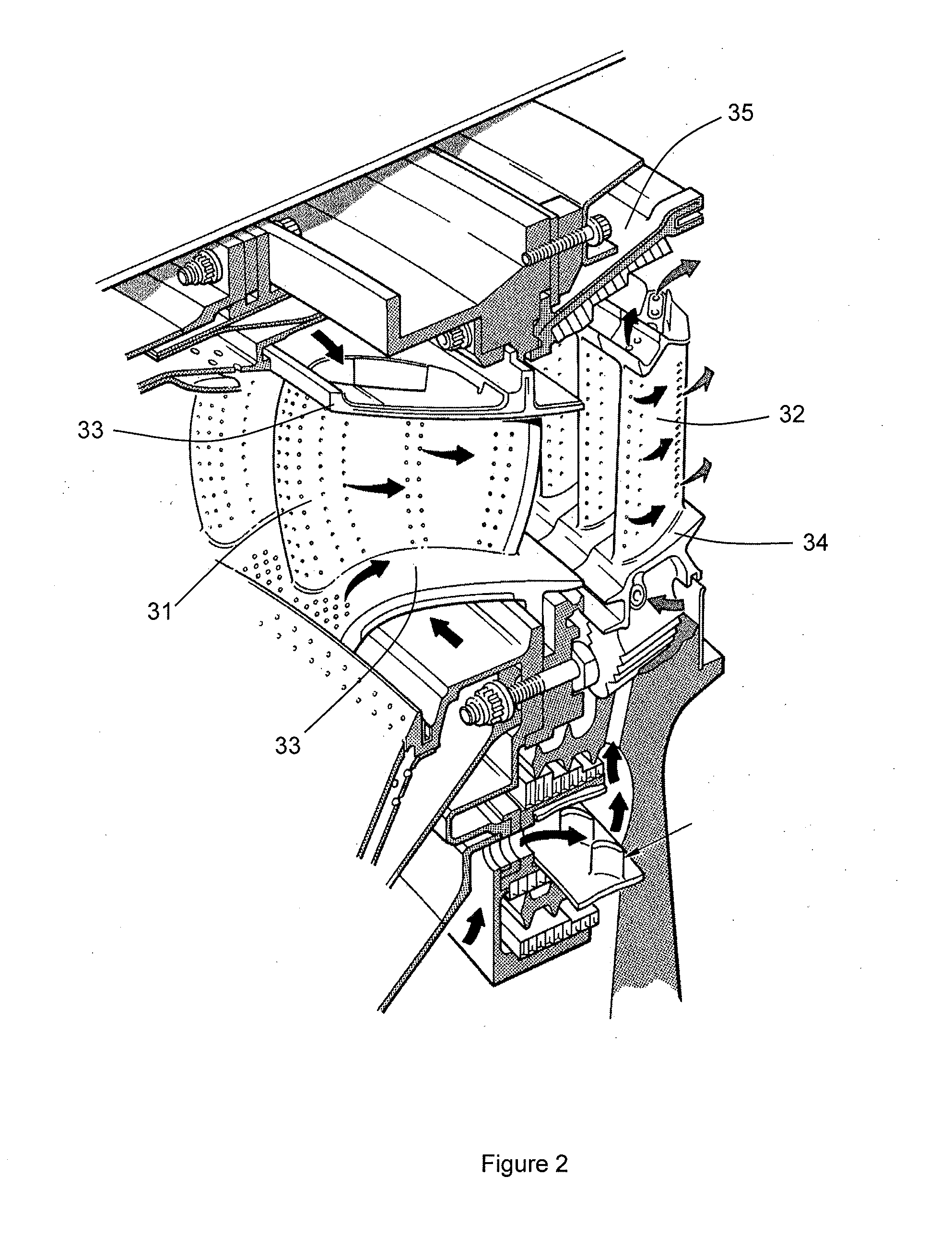Aerofoil cooling
a technology of aerofoil and component cooling, which is applied in the direction of liquid fuel engines, marine propulsion, vessel construction, etc., can solve the problems of reduced strength of the vortex, uncooling of the hot turbine components, and cooling air from the compressor used to cool the hot turbine components is not used fully to extract work from the turbine, so as to improve the cooling scheme effect of the aerofoil componen
- Summary
- Abstract
- Description
- Claims
- Application Information
AI Technical Summary
Benefits of technology
Problems solved by technology
Method used
Image
Examples
Embodiment Construction
[0053]The present invention relates to a component having an aerofoil portion which contains a helical passage for coolant flow, the passage spiralling around an axis that extends in the length direction of the aerofoil portion. The helical shape can increase the gas-washed surface area of the passage. Further, the cooling flow can be confined to flow in a spiral direction by the walls of the passage.
[0054]The complex shape of the helical passage limits the manufacturing processes that can be employed to produce the component. However, the component can be manufactured using, for example, Virtual Pattern Casting (VPC) or Direct Metal Laser Sintering (DMLS), both being processes used in rapid prototyping procedures.
[0055]In the case of VPC, an energy beam, such as a laser, cures a polymer impregnated ceramic powder in a series of layers to produce an intricately-shaped core. The core is fired and built into a wax pattern die, which is then used to produce wax patterns for use in an i...
PUM
 Login to View More
Login to View More Abstract
Description
Claims
Application Information
 Login to View More
Login to View More - R&D
- Intellectual Property
- Life Sciences
- Materials
- Tech Scout
- Unparalleled Data Quality
- Higher Quality Content
- 60% Fewer Hallucinations
Browse by: Latest US Patents, China's latest patents, Technical Efficacy Thesaurus, Application Domain, Technology Topic, Popular Technical Reports.
© 2025 PatSnap. All rights reserved.Legal|Privacy policy|Modern Slavery Act Transparency Statement|Sitemap|About US| Contact US: help@patsnap.com



